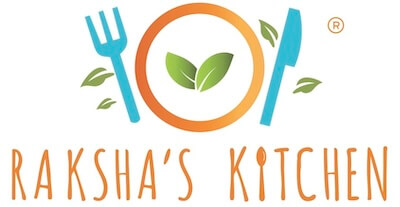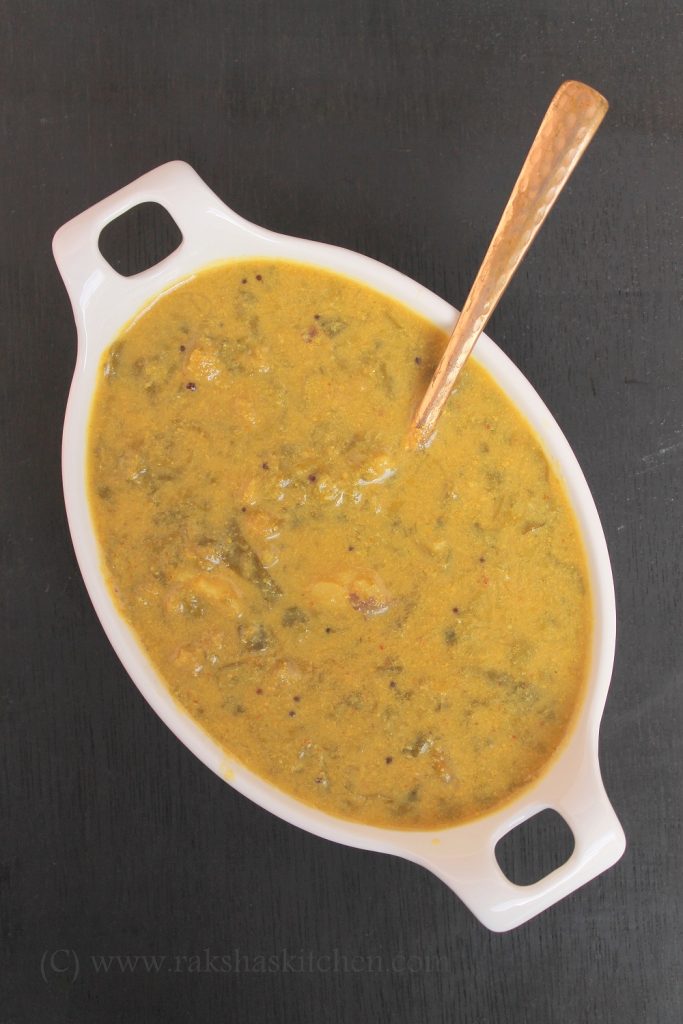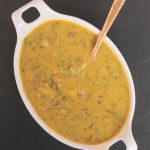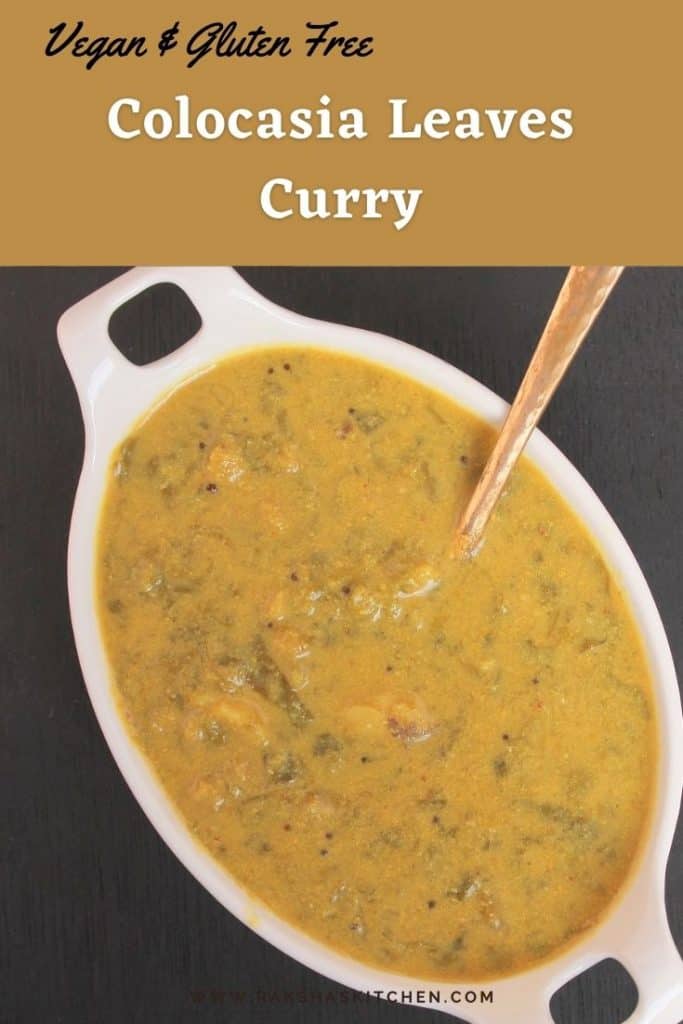Colocasia leaves curry also known as terre tonak is a delicious recipe cooked with colocasia leaves or taro leaves, grated coconut, and spices. Alu che tonak or alu chi patal bhaji is made in the same way too. Get the video to make this Goan traditional no onion no garlic tere or alu tonak recipe.
Terre or Tere leaves or colocasia leaves are found in abundance in Goa during the monsoon season. Tere or Terren or alu is a type of colocasia leaf. Today’s recipe is delicious tere tonak or alu chi patal bhaji made with taro leaves. This colocasia leaf recipe is a traditional Goan curry and is a must try recipe during the monsoons.
Various types of delicious dishes are cooked in Goa during this monsoon season using the seasonal local produce. Just walk around the villages and you will see people selling forest mushrooms (almi), colocasia leaves (terren), bamboo shoots (killa), colocasia roots (maddi), raw cashewnuts (bibe), forest bittergourds (phagla), ankur, jackfruits, local cucumbers, etc.
Colocasia leaves itching and remedy:
Since these colocasia leaves are acrid, some people might get allergic reactions and mouth, lips and throat might start itching. It is always advisable to cook these leaves with souring agent like tamarind or kokum. This is the colocasia leaves itching throat remedy. Also, if you are sensitive then while peeling or cutting the leaves, apply oil, preferably coconut oil to your hands and then peel it.
Also check other colocasia recipes like Taro root stir fry , Crispy fried taro root
Ingredients that go in making Colocasia leaf recipe like this delicious vegan colocasia curry:
- Colocasia leaves: Colocasia leaves known as alu or terre is the star ingredient and is used in this recipe.
- Legumes: Legumes or dal is also used in this recipe. Either chana dal (split Bengal gram dal) or green gram(moong) can be used in this colocasia leaves recipe.
- Jackfruit seeds: Traditionally, few jackfruit seeds are used while making colocasia recipes. Usually colocasia leaves and jackfruits are found abundantly in the same season and hence, if jackfruit seeds are available, do use it in this healthy recipe.
For making the masala curry:
- Coconut: Use freshly grated coconut in this recipe. The coconut and spices are ground together to make a tangy and spicy gravy.
- Spices: Spices like coriander seeds, dry red chillies/shepda/byadgi chilies, tamarind and turmeric powder is used in this recipe.
- Jaggery: Jaggery is used for adding mild sweetness to this recipe.
- Kokum petals: Kokum petals are responsible for making the colocasia curry sour. The colocasia leaves masala curry sometimes causes itchy throat. Adding kokum petals along with tamarind helps in dealing with itchiness.
For tempering:
- Mustard seeds and curry leaves are added for tempering the terre tonak.
Also check other seasonal recipes like:
How to make alu che tonak or terre tonak?
- Before making the colocasia leaves curry, apply coconut oil to your palms and start peeling the terre/colocasia stems. Finely chop the stems and leaves.
- Wash and soak the pulses i.e. chana dal for atleast 30 minutes.
- After 30 minutes, take a pressure cooker and add the chopped leaves, stems, chopped jackfruit seeds and dal along with ½ cup water.
- Pressure cook for 5 whistles or till dal is cooked. Switch off the gas and wait for the pressure from the cooker to be released naturally.
- Add all the ingredients meant for the masala gravy i.e. grated coconut, tamarind, dry red chillies and coriander seeds along with ½ cup water and grind into a thin smooth gravy.
- Heat a deep kadai/heavy bottomed pan. Add 1 teaspoon oil in it. After oil gets heated, add mustard seeds. After mustard seeds flutter, add curry leaves and fry for ½ minute. Pour the gravy from mixer/grinder into it.
- Mix the contents from the pressure cooker in the masala gravy and mix well.
- Add jaggery and kokum petals and mix.
- Let it simmer.
- Add salt to taste and mix.
Colocasia Leaves Curry | Goan Terre Tonak
Ingredients
- 15-20 terre or colocasia leaves
- ¼ cup chana dal or split Bengal gram dal or green grams
- 4 jackfruit seeds peeled and crushed
For the masala curry:
- ½ cup coconut freshly grated
- 1 teaspoon coriander seeds
- ½ teaspoon turmeric powder
- 3 dry red chillies
- 1 tamarind marble sized ball
- 1 tablespoon jaggery grated
- 3 kokum petals
- To taste salt
For tempering:
- 1 teaspoon mustard seed
- 1 sprig curry leaves
Instructions
- Before making the colocasia leaves curry, apply coconut oil to your palms and start peeling the terre/colocasia stems. Finely chop the stems and leaves.
- Wash and soak the pulses i.e. chana dal for atleast 30 minutes.
- After 30 minutes, take a pressure cooker and add the chopped leaves, stems, chopped jackfruit seeds and dal along with ½ cup water.
- Pressure cook for 5 whistles or till dal is cooked. Switch off the gas and wait for the pressure from the cooker to be released naturally.
- Add all the ingredients meant for the masala gravy i.e. grated coconut, tamarind, dry red chillies and coriander seeds along with ½ cup water and grind into a thin smooth gravy.
- Heat a deep kadai/heavy bottomed pan. Add 1 teaspoon oil in it. After oil gets heated, add mustard seeds. After mustard seeds flutter, add curry leaves and fry for ½ minute. Pour the gravy from mixer/grinder into it.
- Mix the contents from the pressure cooker in the masala gravy and mix well.
- Add jaggery and kokum petals and mix.
- Let it simmer.
- Add salt to taste and mix.
Video
Pin this image on Pinterest.
Note: The post was originally published on 25th Jul 2016 and is re-published





so cool!
Terrem is not Alu.
Terem grow anywhere.Alu require Mad to grow
Please get me back if Iam wrong
They are almost same. The plant is different but texture is same. The recipe preparation style is same too.
Hi!are you really from Goa or you’re getting recipes from the book?….just a question.
Hi! Do you have any doubts? Do you want my bio-data?
Can you tell me the name of the book where this recipe is published? That should clear your doubts.
Good
Thanks